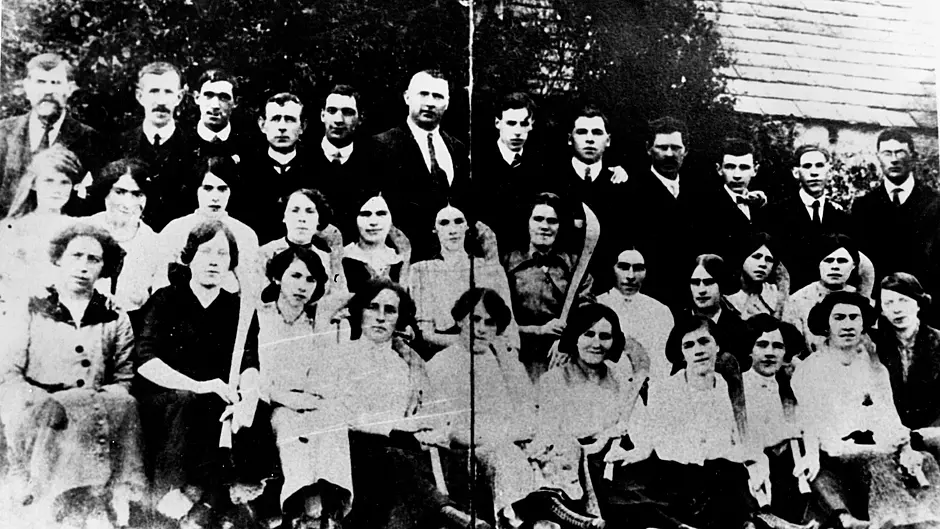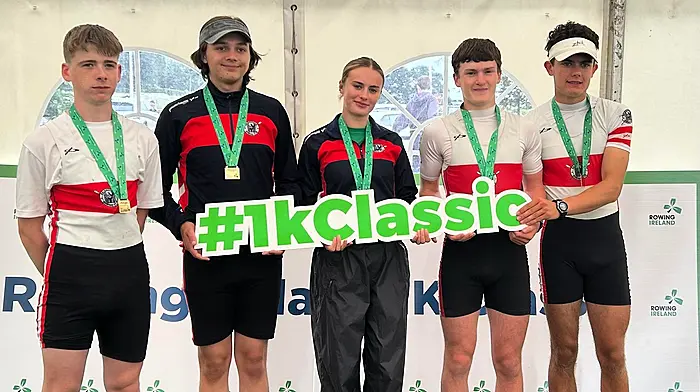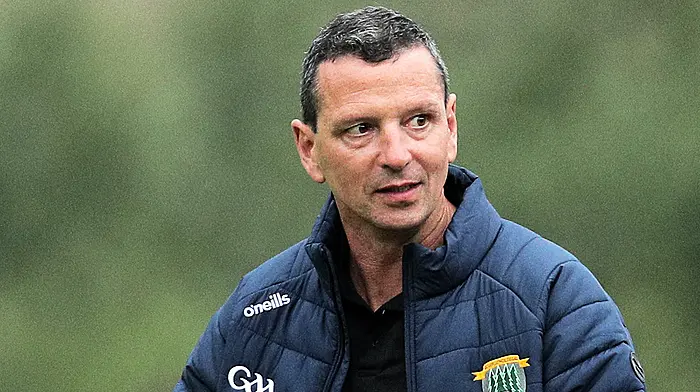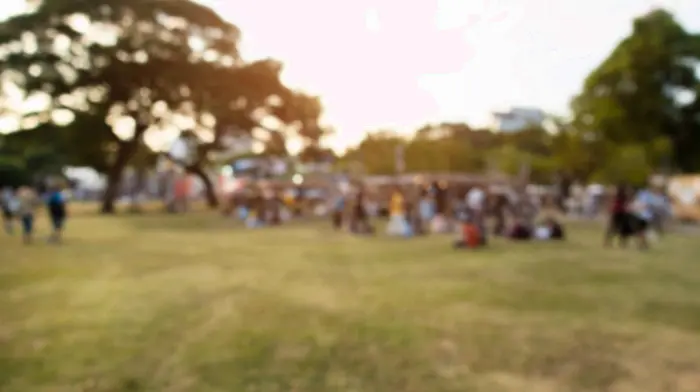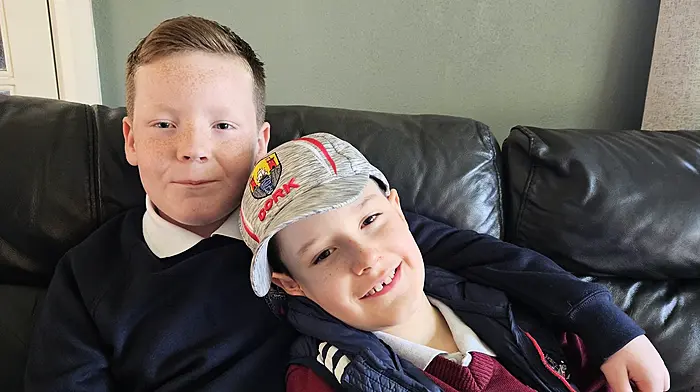In the second of a two-part series, TOM LYONS continues to delve into the early days of camogie in West Cork. Here, he focuses on the first West Cork camogie championship held in 1917. PART 1 HERE
*****
ALTHOUGH media coverage of camogie in West Cork in the years 1915 and 1916 was almost non-existent, the game was catching on very well in many areas.
Just like football and hurling, one of the main problems facing the camogie clubs was the travelling difficulties to play matches. Playing matches against teams from other parts of the county was not practical, so to cope with the problem, the first-ever West Cork camogie championship was set up in 1917.
Involved in this first championship were:
Barryroe (Lislevane) – A camogie club was formed in August and there was no shortage of practice fields. The ladies were able to wield the camán with skill and dexterity.
Bantry – A team was formed at Scart, with a practice field by the School House. Bantry beat Skibbereen easily at the Skibbereen Feis. This strange advice was given by the reporter: ‘If you don’t hit the ball, hit something. And no matter whither it goes, or how fares the fortunes of the game, keep one eye at least on the on-lookers.’
Clonakilty – Local Sinn Féin activist and a member of the Clonakilty football and hurling teams, Mick Ahern was the chairman of the new Clonakilty club. Captain of the team was Babe Crowley, aunt of the famous Tadhgo Crowley.
Casheliskey – Situated between Clonakilty and Kilbree, they had a strong team as camogie was also being played in the nearby Kilmeen area.
Dunmanway – To match the men who had formed the first hurling team in Dunmanway in 1917, the ladies of the town formed their first camogie team. The team was made up mostly of girls from Castle Street.
The first camogie championship to be run off in West Cork was for a set of silver medals. It’s not clear who was organising the competition. The opening two games were played in Clonakilty’s Fair Field (which is now the children’s playground and the Scoil na mBuachaillí playground) on September 2nd, 1917.
***
Round 1 – Casheliskey 7-0 Dunmanway 2-0 (12-a-side)
From the throw-in ‘the O’Rahilly combination’ proved the superior side. Dunmanway were only recently formed and lacked official training but showed promise, with captain Maggie Ahern showing rare judgement and hitting power, well assisted by Eileen Lynch and Maggie Barry. Casheliskey showed great combination, with Frances McCarthy and Kate O’Leary outstanding, ‘whose exhibition won countless plaudits.’ Among the winning players was Mina Moloney, who was to marry John ‘Count’ Donovan of Clonakilty in 1920. O’Donovan was an All-Ireland medal winning footballer with Cork in 1911 and a top-class athlete. He tragically died of pneumonia a few weeks after the wedding. Referee for the game was Mick Ahern, chairman of the Clonakilty Camogie Club.
***
Round 1 – Clonakilty 3-0 Barryroe 1-0 (12-a-side)
This was a great contest, with Clonakilty doing most of the pressing but being thwarted by a fine Barryroe defence. Outstanding for Clon were Babe Crowley (captain), Eileen Harte, Katty Murphy, Mina Moloney, Julia Coleman, Maggie Twomey and Kitty Hurley, ‘an inveterate worker whose display in the forward division was frequently applauded.’ For Barryroe, May Brophy and Mary Whelton did excellent work at midfield, with Mary Dineen and Maggie O’Brien also doing well. Referee was Con Ahern, Dunmanway.
***
Round 1 – Bantry beat Skibbereen
Bantry beat Skibbereen in a challenge game and then played them on September 9th in the West Cork championship. The Bantry ladies emerged victorious.
The report said: ‘The Bantry ladies have at present put away their walking sticks and are sporting their camogies in preference. It is an every-day occurrence to meet a number of ladies out walking, each carrying their hurleys. It is to be hoped that the Bantry club will win the West Cork Championship. If they keep on as at present, they will make a big bid for it.’
***
Round 2 – Clonakilty beat Bantry
Clonakilty and Bantry met in Skibbereen on September 23rd and the Clon girls proved well superior, winning by a substantial amount. Bantry lacked training but showed promise.
***
Final? – No further report of any camogie championship game is available. The final would have been Clonakilty v neighbours, Casheliskey, with the Clon girls as hot favourites to win.
***
A camogie game was played between the newly-formed teams of Kilmeen and Kilkerrin in Dan O’Brien’s field near Sam’s Cross on December 2nd. Kilkerrin were captained by Katty Hurley and Kilmeen by Nancy Collins. The Kilkerrin girls won by 1-1 to 1-0 and the standard was quite good for two new teams.
***
The fledgling camogie clubs were soon caught up in the turmoil of the political scene in Ireland in 1918 and media coverage of games was almost nil. The harassment of the GAA by the RIC and the military continued in all areas. Even the ladies were not safe.
The Dunmanway Feis on July 7th, 1918 was attended by thousands from all over the area but was stopped by the police and the military, under Inspector Rowan of Clonakilty. Many of the crowd then made their way to a field near the town which was being used for a camogie match. However, the match was not long in progress when a force of about 20 soldiers charged the players, who had to disperse. The soldiers then charged the spectators, who scattered in all directions and the field was cleared.
On their way back to town the police were met by a menacing mob and they again charged. A man named Walsh from Lyre received an ugly head wound. In the town itself the police and military spent the evening clearing the streets, without serious opposition.
The War of Independence, the Civil War and the political troubles of the following years seem to have put an end to the camogie activity in West Cork as not a single word is written of any activity until the late 1930s, with a vibrant camogie scene emerging in the 1940s.

